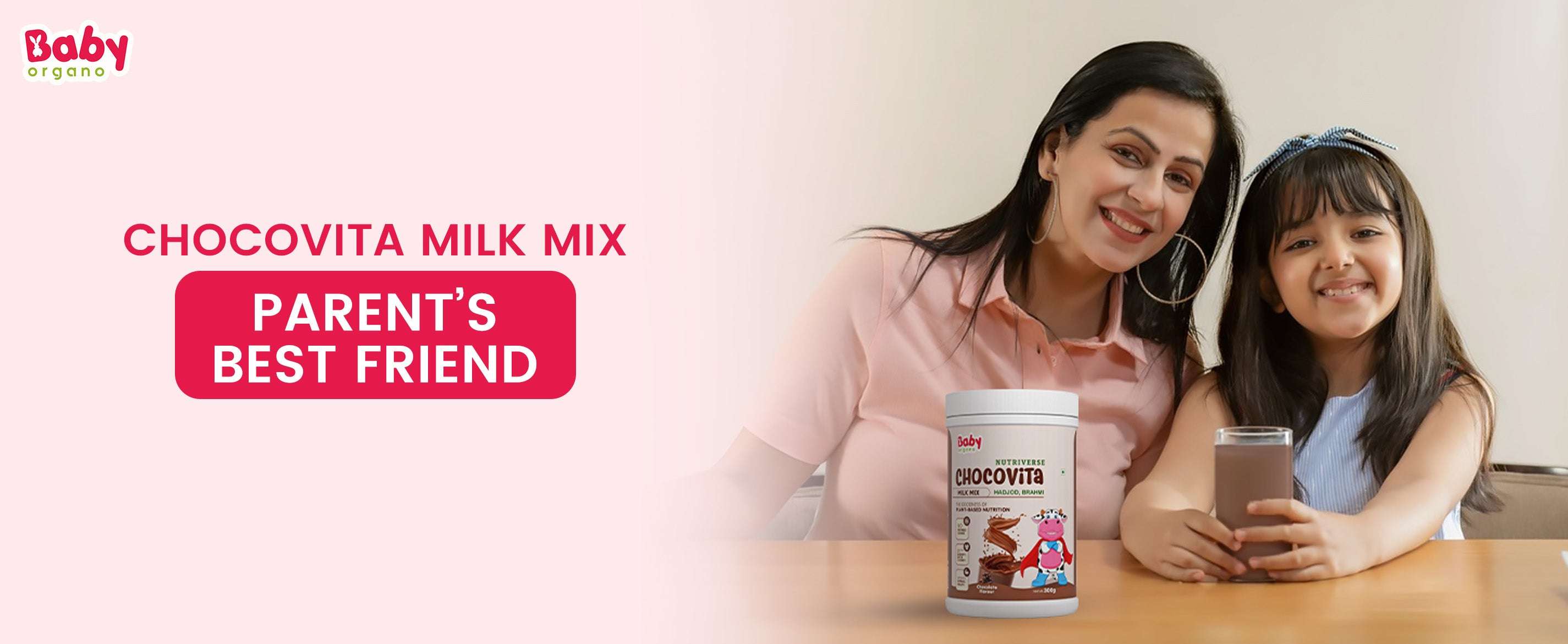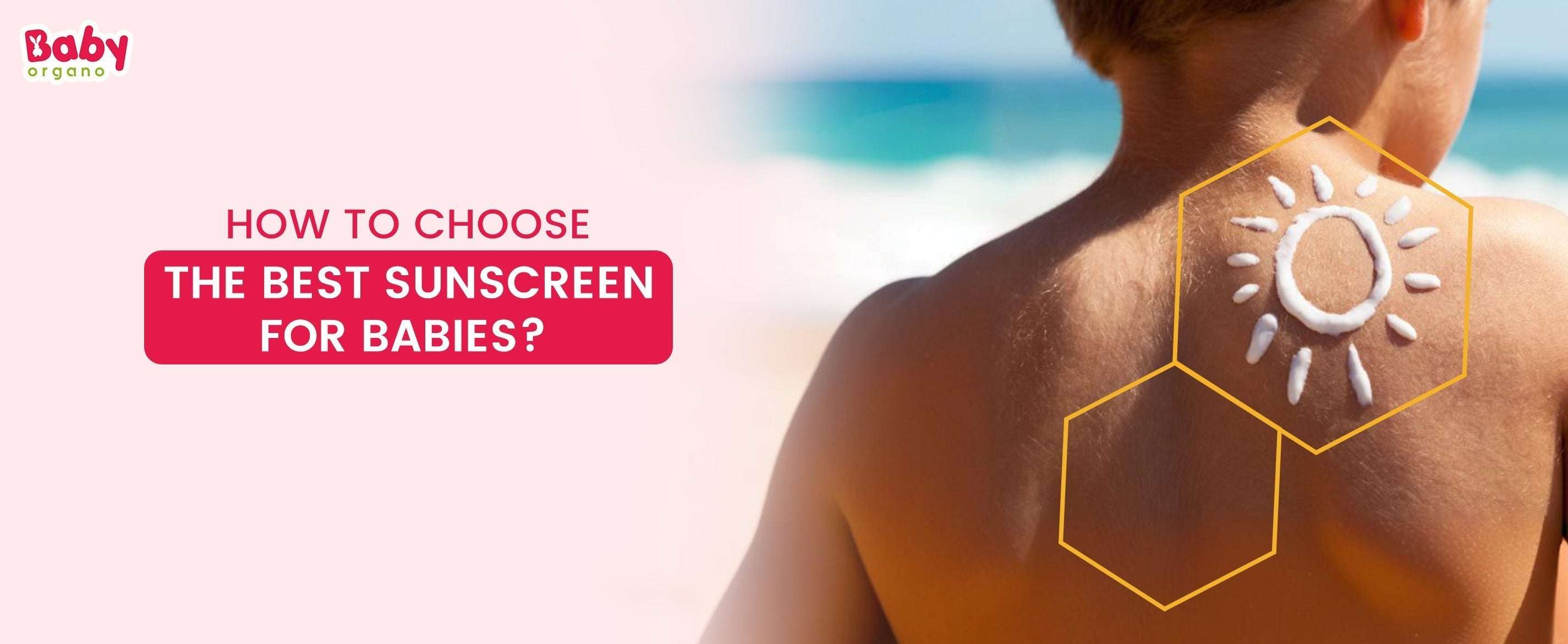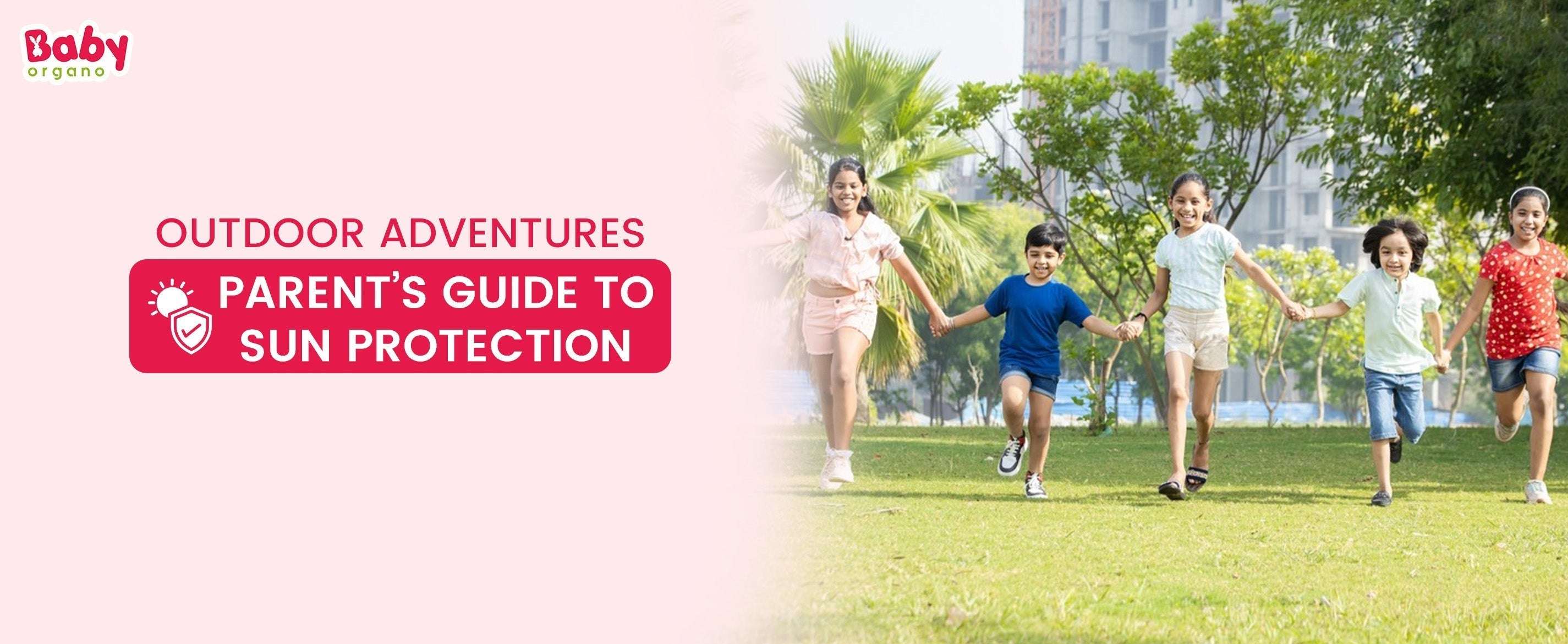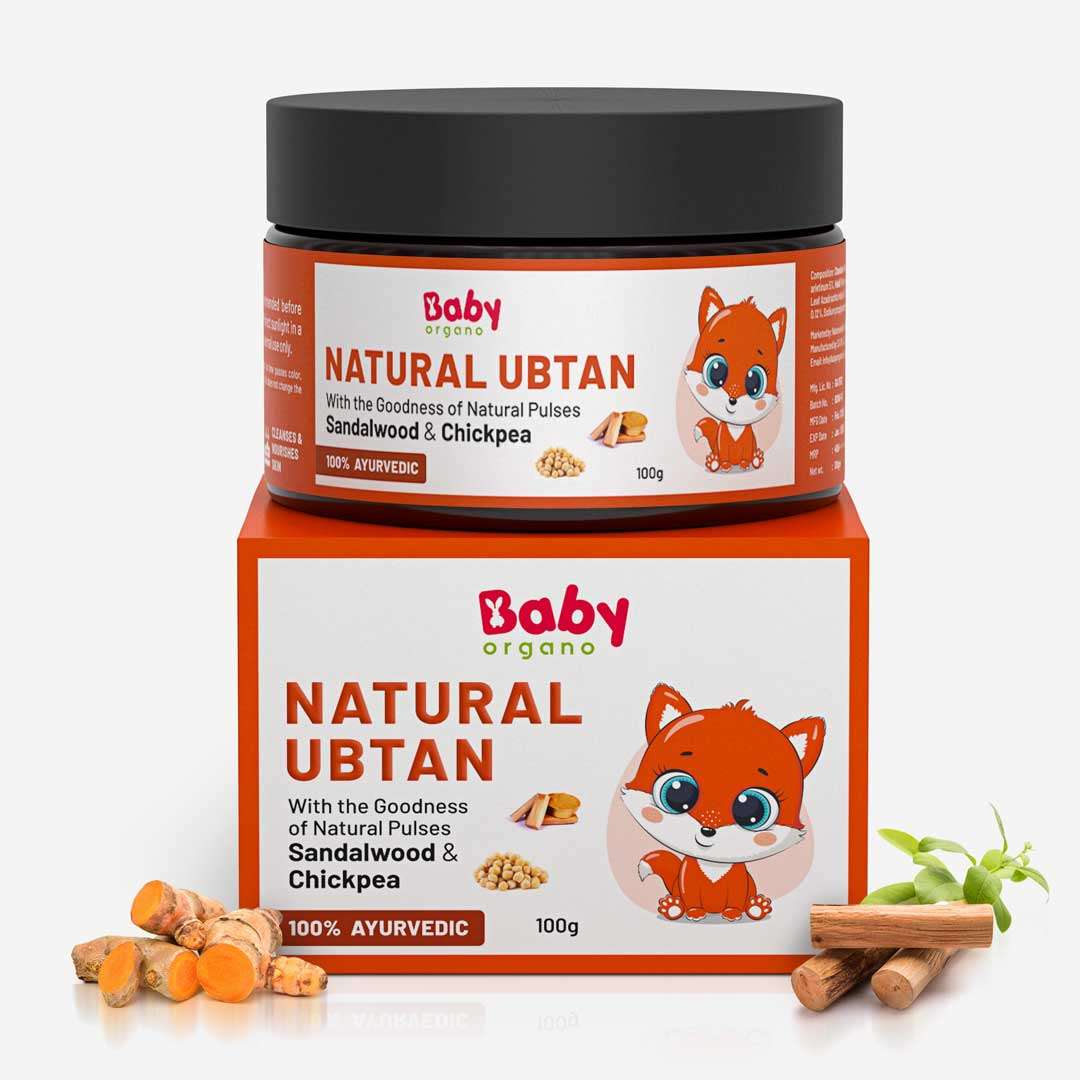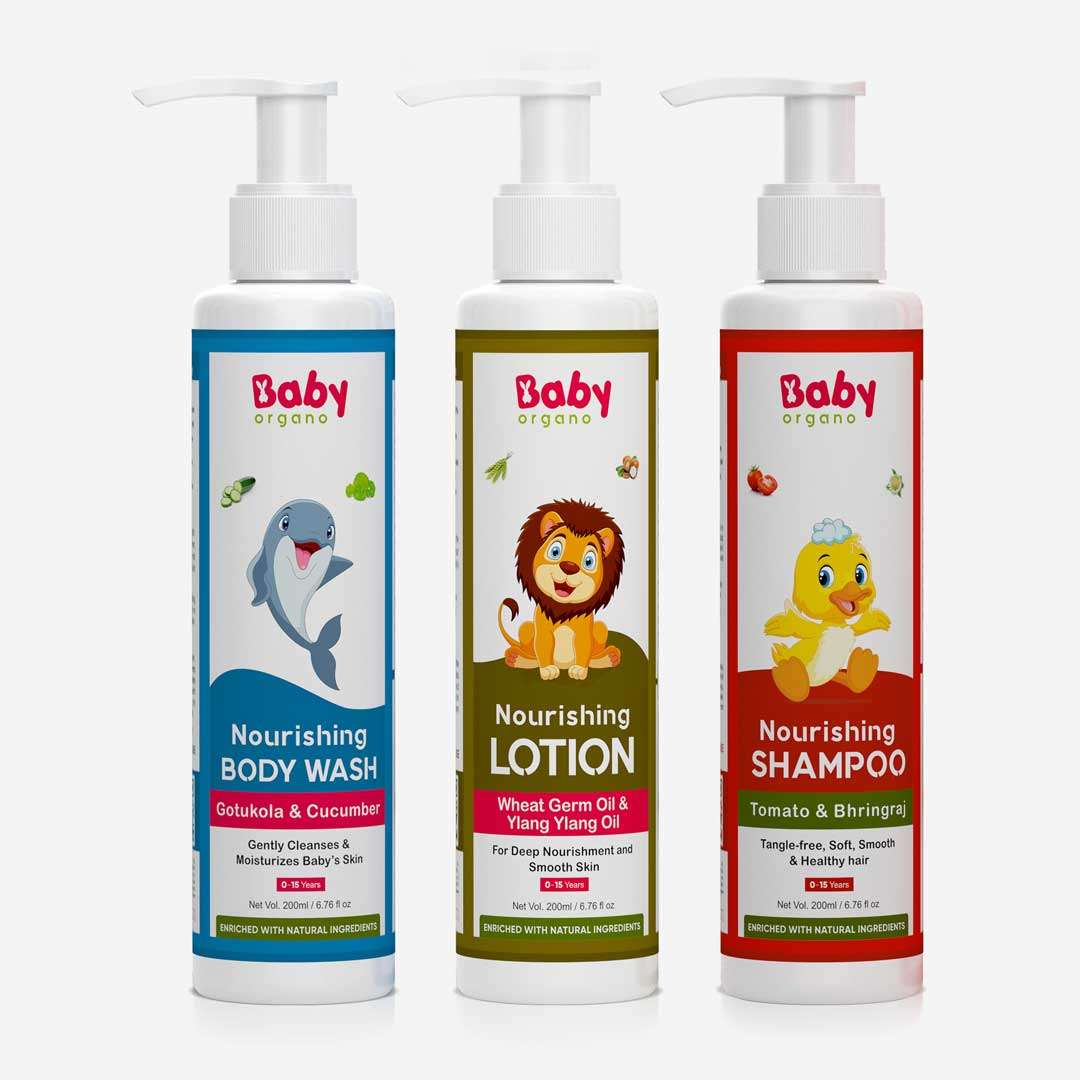The Importance of Sun Protection: Why Kids Sunscreen is a Must?
- by Dr. Urvi Ashani
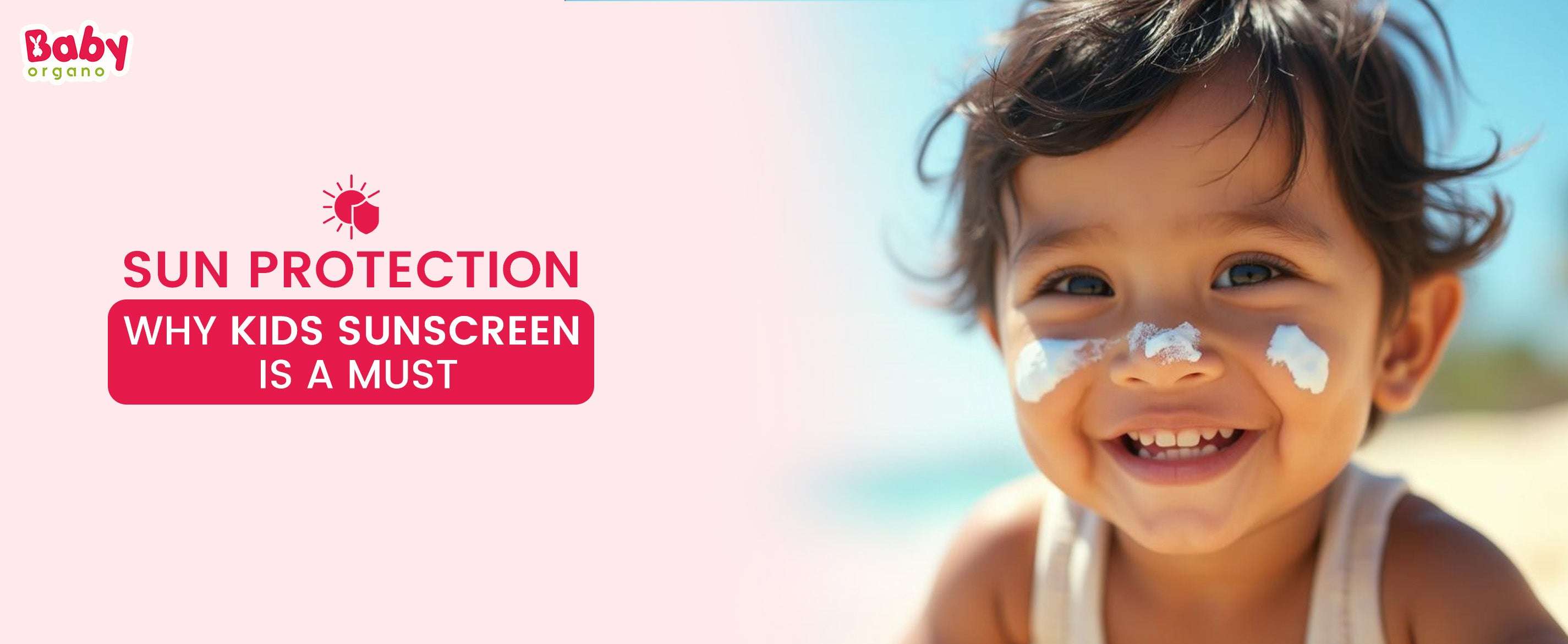
Warm sunlight falling on your baby as they run to catch their shadow is a true delight for your eyes. The bright light fills their hearts with joy and enriches their bodies with Vitamin D, which is essential for their growth and development.
But do you know that your child is at a higher risk of getting sunburned than you? This is why they need a dedicated sun protection routine that is gentle and effective on their skin.
In this article, you will learn about the importance of sunscreen and sun protection for kids. We have also shared some handy tips to help you find the right sunscreen for your little one. So, let’s start:
Why Kids Need Special Sun Protection
The two primary types of UV radiation that reach us are UVA and UVB. UVA rays enter the deeper layers of the skin, causing premature ageing and long-term damage. Conversely, UVB rays cause sunburn and harm skin cells.
Here’s why your little one’s delicate skin needs special protection from these rays:
🔹 Thinner and More Absorbent Skin – Kids’ skin is thinner and more permeable than adults, which means it absorbs sun radiation more quickly. The UVA and UVB rays can easily penetrate their skin, leading to immediate and long-term skin issues.
🔹 Developing skin barrier – Your child’s natural skin barrier develops as they grow, exposing them easily to UV rays. Thus, they need a rich skincare product like a mineral-based sunscreen to shield them from sun damage.
🔹 Lower melanin levels – Melanin, the pigment that provides natural sun protection, is present in lower amounts in your kid’s skin. This makes them more prone to sun damage, so investing in a broad-spectrum sunscreen with SPF 50 is a must.
🔹 More sweating – Kids' skin can retain more water than adult skin. However, it loses moisture quickly through excessive sweating. This leads to dryness, itchiness, and rashes.
This is why your little one needs extra protection from the harmful sun rays.
Risks of Sun Exposure in Infants
Newborns below the age of six months have skin as sensitive as a cotton ball. Even a tiny squeeze on their cheek can turn it red for hours. This is why dermatologists suggest that babies avoid direct sun exposure. The potential risks of sun contact in infants are:
-
A short period spent in the sun can cause severe sunburn.
-
Prolonged sun exposure can make them sweat profusely, causing dehydration due to loss of water.
-
In severe cases, sun exposure can lead to sunstroke in infants.
When to Start Using Sunscreen?
As mentioned above, babies below six months of age should not be exposed to the sun to avoid damaging their delicate skin.
However, after six months, you must start using a kid-friendly sunscreen for your little one. It will act as a barrier and restrict the harmful UV rays from penetrating your baby’s skin. You must choose a broad-spectrum sunscreen with an SPF 50 formula. Ensure it is mineral-based and free from chemicals.
In addition, it is best to cover their tiny bodies with soft, full-sleeved clothes made of breathable material. Wide-brimmed hats, sunglasses, and gloves are excellent options for additional sun protection.
Choosing the Right Sunscreen for Kids
Selecting a sunscreen suitable for your little one’s delicate skin can leave you confused. Every child has a unique skin type that needs a different sunscreen formula and ingredients. The market has various options, though you can’t trust them all. Here’s the list of essential factors you need to look for in your baby’s sunscreen:
Broad-spectrum coverage:
A broad-spectrum sunscreen shields your baby’s delicate skin from UVA (premature ageing) and UVB (sunburn) damage. Since their skin is thinner and more absorbent, an Ayurvedic, kid-safe sunscreen is the best choice for complete protection.
SPF and PA ratings:
Sun Protection Factor or SPF measures a sunscreen’s ability to protect against UVB rays, which cause sunburn. Contrarily, the PA factor shows the protection level offered by sunscreen against UVA rays. The higher the SPF and PA count, the better the protection. Here’s what these ratings show:

For maximum protection, experts recommend SPF 50 and PA+++ - rated sunscreen for kids’ delicate skin.
Water resistance:
Sweat and outdoor play can quickly wear off sunscreen. A water-resistant sunscreen ensures long-lasting protection, even under water and during excessive sweating.
A sunscreen with 40 minutes of water resistance is ideal for regular outdoor play, while 80 minutes of water resistance offers protection during swimming or extended sun exposure.
Mineral-based ingredients:
Sunscreens with natural minerals like zinc oxide and titanium dioxide are gentler on sensitive skin than those with chemicals like oxybenzone. Chemical-infused sunscreens rest on the skin and turn UV rays into heat, which is expelled from the body. However, these ingredients can enter the skin layer and cause irritation or allergic reactions.
On the other hand, mineral-based sunscreens stay on the skin’s outer layer and do not seep in. Instead of absorption, they protect by reflecting away UV rays.
Fragrance-free and hypoallergenic:
Your child is likely to experience rashes, allergies, and skin irritation on their delicate skin. So, it's essential to choose a natural, hypoallergenic sunscreen made with gentle herbs and natural ingredients, free from chemicals, artificial fragrances, and synthetic colors. A dermatologically tested, odorless, and non-comedogenic formula ensures safe, irritation-free protection for your little one’s delicate skin.
Easy application:
Stick, spray, or lotion forms are easy to apply and reapply without discomfort.
Beyond Sunscreen – Extra Protection Tips
While sunscreen is a crucial element of sun safety, additional protective measures can further reduce UV exposure.
Sun-Protective Clothing & Accessories
One of the best ways to prevent sun damage is to dress children in lightweight, long-sleeved clothing. Many brands offer clothing with UPF (Ultraviolet Protection Factor) ratings, which provide added defense against harmful rays. You can also use wide-brimmed hats to protect your child’s face from getting tanned. Plus, sunshades on baby strollers help protect the baby from UV. Lastly, UV-blocking sunglasses are effective in safeguarding their delicate eyes from potential damage.
Seeking Shade & Timing for Outdoor Play
Ultraviolet rays are most intense between 10 in the morning and 4 in the afternoon. One way of minimizing the effects of the sun’s rays is to avoid being outdoors during those peak periods. Ensure that your child spends their playtime in well-shaded playgrounds so they can rest in the fresh air. Give them a water bottle and ask them to take frequent breaks to avoid dehydration.
Teaching Toddlers Sun Safety Habits
Instilling sun safety habits early helps children understand the importance of Sun protection. Teach them to apply sunscreen before going outside, wear hats, drink water, and seek shade when the sun feels too intense. Making it a routine ensures they develop lifelong sun-safe behaviors.
UV Rays 101: What’s Really Harming Your Child’s Skin
Did you know 80% of sun damage happens before age 18? Discover how invisible UV rays penetrate clouds and windows, harming your child's skin even on cloudy days—plus exactly how to shield them with science-backed strategies.

Conclusion
Sun protection is not just about preventing short-term discomfort from sunburns; it’s a crucial investment in your child’s long-term skin health—especially when using gentle, dermatologist-tested kids & baby skin care products. With their delicate skin more vulnerable to UV damage, your little one requires special care through sunscreen, protective clothing, and innovative outdoor habits.
Choosing the right sunscreen (like fragrance-free, mineral-based options from trusted kids & baby skin care lines), applying it correctly, and reinforcing sun-safe behaviors from an early age can significantly reduce risks. Prioritize formulas designed for sensitive skin to keep playtime both joyful and safe. Enjoy the sun-smart enrichment!
Addressing Common Parent Concerns for Kids' Sunscreen (FAQ)
1. Do kids require kid sunscreen?
Yes, but only after six months. Infants younger than six months should avoid direct sunlight and use protective clothing and shade instead. For babies older than six months, an ayurveda-inspired or natural product is safest as they provide a physical barrier without harsh chemicals.
2. Why is sun protection important?
Sun protection prevents immediate issues like sunburn and dehydration while reducing the long-term risks of skin cancer, premature aging, and immune suppression.
3. At what age can I start using sunscreen on my baby?
Sunscreen is recommended for babies six months old and older. Before this age, it’s best to avoid direct sun exposure and use physical barriers, such as clothing and shade, for protection.
4. What types of UV rays harm kids' skin?
UVA and UVB rays both pose risks. UVA rays penetrate deep into the skin, causing long-term damage and aging, while UVB rays cause sunburns and immediate skin damage. Broad-spectrum sunscreen like BabyOrgano AYurshild protects against both types, preventing burns and reducing the risk of skin diseases.
5. How do I make sun protection a habit for my child?
Start early by incorporating sunscreen application into the daily routine. Make it fun by letting your kids apply it themselves under your supervision. Encourage them to wear hats and sunglasses as part of their outfits, and explain why sun safety is vital in simple language. Consistency is key to forming lifelong habits.
- Posted in:
- Parenting tips


